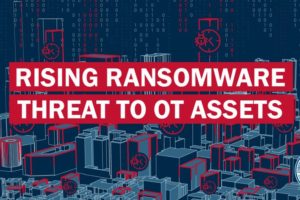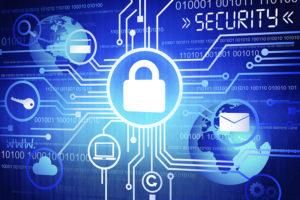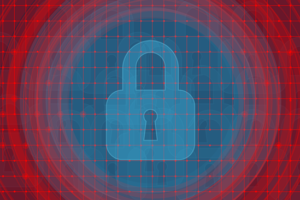NCSC CEO warns that ransomware is key cyber threat







The Federal Bureau of Investigation has issued an alert regarding “Conti,” a highly disruptive ransomware variant. Attacks associated with Conti and the previously published Darkside ransomware variant are believed to be emanating from criminal networks operating from a non-cooperative foreign jurisdiction.
The FBI says it identified at least 16 Conti ransomware attacks targeting U.S. health care and first responder networks, including law enforcement agencies, emergency medical services, 911 dispatch centers and municipalities within the last year.
Ransomware attacks associated with these variants have resulted in regionally disruptive impacts to critical infrastructure, including hospitals and health systems in the United States and Ireland. Most recently, hospitals in New Zealand have been hit by disruptive ransomware attacks.
These ransomware attacks have delayed or disrupted the delivery of patient care and pose significant potential risks to patient safety and the communities that rely on hospitals’ availability.
The American Hospital Association (AHA) remains concerned about cyberattacks with the potential to disrupt patient care and jeopardize patient safety. As stated in our testimony before the Senate Homeland Security Committee in December 2020, the AHA believes that a ransomware attack on a hospital or health system crosses the line from an economic crime to a threat-to-life crime.
The AHA acknowledges and commends the U.S. government’s efforts to share timely and actionable cyber-threat intelligence. However, relying on victimized organizations to individually defend themselves against these attacks is not the solution to this national strategic threat. The vast majority of these attacks originate from outside the United States, often beyond the reach of U.S. law enforcement, where ransomware gangs are provided safe harbor and allowed to operate with impunity, sometimes with the active assistance of adversarial nations.
In response, the AHA has urged the government to embark upon a coordinated campaign that will use all diplomatic, financial, law enforcement, intelligence and military cyber capabilities to disrupt these criminal organizations and seize their illegal proceeds, as was done so effectively during the global fight against terrorism.

(Updated May 19, 2021): Click here for a STIX package of indicators of compromise (IOCs).
Note: These IOCs were shared with critical infrastructure partners and network defenders on May 10, 2021. The applications listed in the IOCs were leveraged by the threat actors during the course of a compromise. Some of these applications might appear within an organization's enterprise to support legitimate purposes; however, these applications can be used by threat actors to aid in malicious exploitation of an organization's enterprise. CISA and FBI recommend removing any application not deemed necessary for day-to-day operations.
The Cybersecurity and Information Security Agency (CISA) and the Federal Bureau of Investigation (FBI) are aware of a ransomware attack affecting a critical infrastructure (CI) entity—a pipeline company—in the United States. Malicious cyber actors deployed Darkside ransomware against the pipeline company’s information technology (IT) network. At this time, there is no indication that the
entity’s operational technology (OT) networks have been directly affected by the ransomware.
CISA and FBI urge CI asset owners and operators to adopt a heightened state of awareness and implement the recommendations listed in the Mitigations section of this Joint Cybersecurity Advisory, including implementing robust network segmentation between IT and OT networks; regularly testing manual controls; and ensuring that backups are implemented, regularly tested, and isolated from network connections. These mitigations will help CI owners and operators improve their entity's functional resilience by reducing their vulnerability to ransomware and the risk of severe business degradation if impacted by ransomware.
Darkside Ransomware: Best Practices for Preventing Business Disruption from Ransomware Attacks
(Updated May 19, 2021): Click here for a STIX package of indicators of compromise (IOCs). Note: These IOCs were shared with critical infrastructure partners and network defenders on May 10, 2021. The applications listed in the IOCs were leveraged by the threat actors during the course of a compromise. Some of these applications might appear within an organization's enterprise to support legitimate purposes; however, these applications can be used by threat actors to aid in malicious exploitation of an organization's enterprise. CISA and FBI recommend removing any application not deemed necessary for day-to-day operations.
The Cybersecurity and Information Security Agency (CISA) and the Federal Bureau of Investigation (FBI) are aware of a ransomware attack affecting a critical infrastructure (CI) entity—a pipeline company—in the United States. Malicious cyber actors deployed Darkside ransomware against the pipeline company’s information technology (IT) network. At this time, there is no indication that the
entity’s operational technology (OT) networks have been directly affected by the ransomware.
CISA and FBI urge CI asset owners and operators to adopt a heightened state of awareness and implement the recommendations listed in the Mitigations section of this Joint Cybersecurity Advisory, including implementing robust network segmentation between IT and OT networks; regularly testing manual controls; and ensuring that backups are implemented, regularly tested, and isolated from network connections. These mitigations will help CI owners and operators improve their entity's functional resilience by reducing their vulnerability to ransomware and the risk of severe business degradation if impacted by ransomware.
Mitigations
CISA and FBI urge CI owners and operators to apply the following mitigations to reduce the risk of compromise by ransomware attacks.
- Require multi-factor authentication for remote access to OT and IT networks.
- Enable strong spam filters to prevent phishing emails from reaching end users. Filter emails containing executable files from reaching end users.
- Implement a user training program and simulated attacks for spearphishing to discourage users from visiting malicious websites or opening malicious attachments and reenforce the appropriate user responses to spearphishing emails.
- Filter network traffic to prohibit ingress and egress communications with known malicious IP addresses. Prevent users from accessing malicious websites by implementing URL blocklists and/or allowlists.
- Update software, including operating systems, applications, and firmware on IT network assets, in a timely manner. Consider using a centralized patch management system; use a risk-based assessment strategy to determine which OT network assets and zones should participate in the patch management program.
- Limit access to resources over networks, especially by restricting RDP. After assessing risks, if RDP is deemed operationally necessary, restrict the originating sources and require multi-factor authentication.